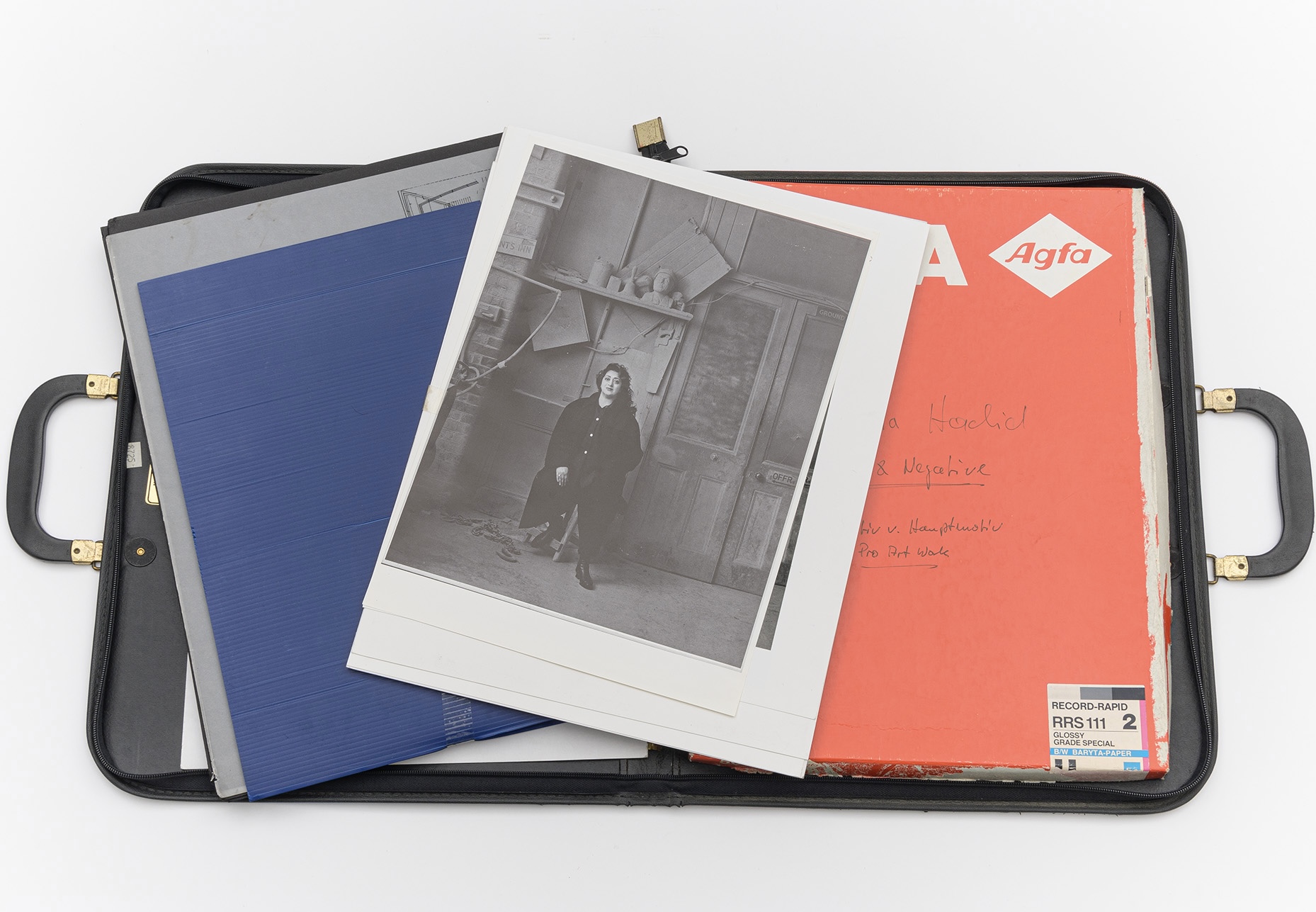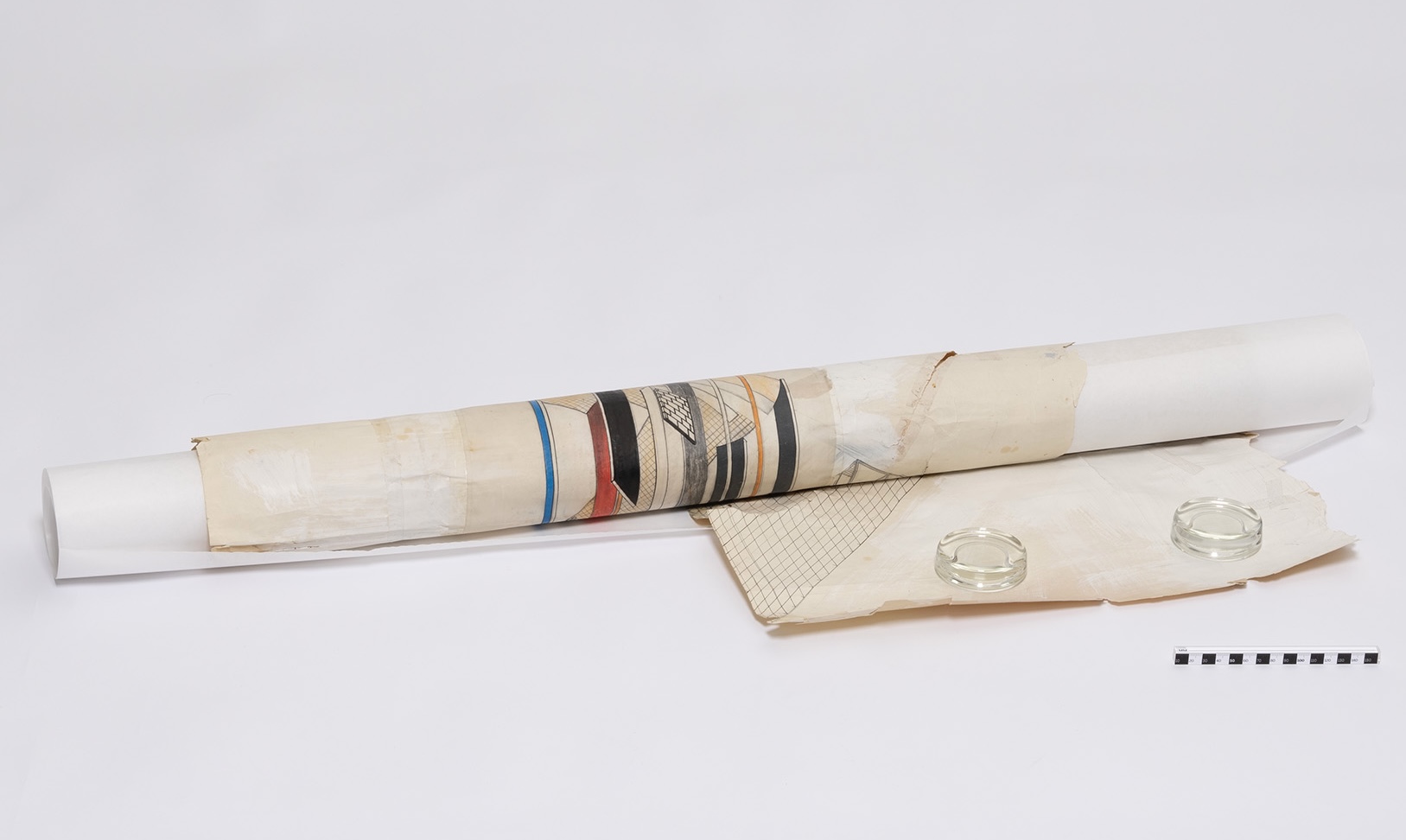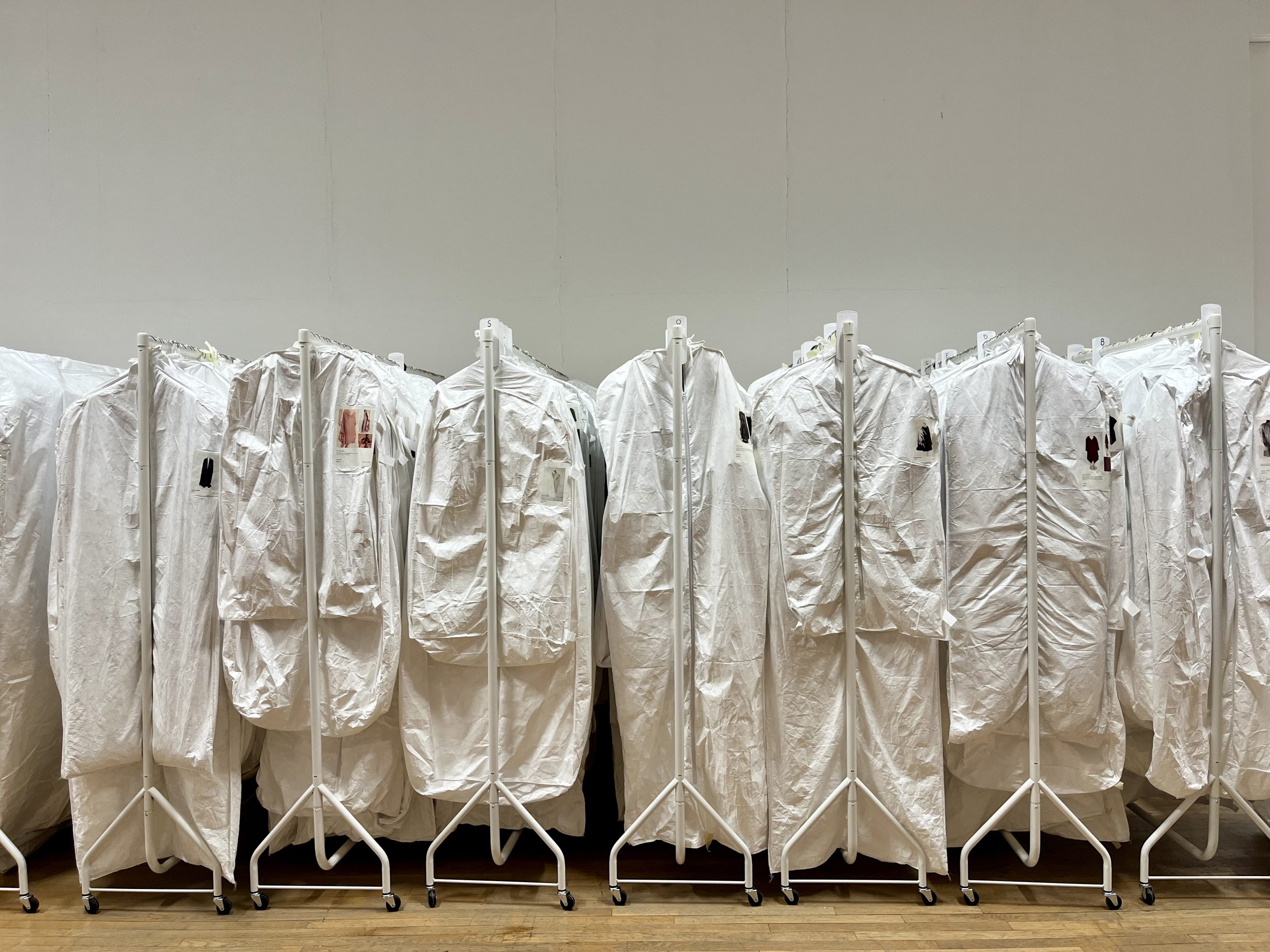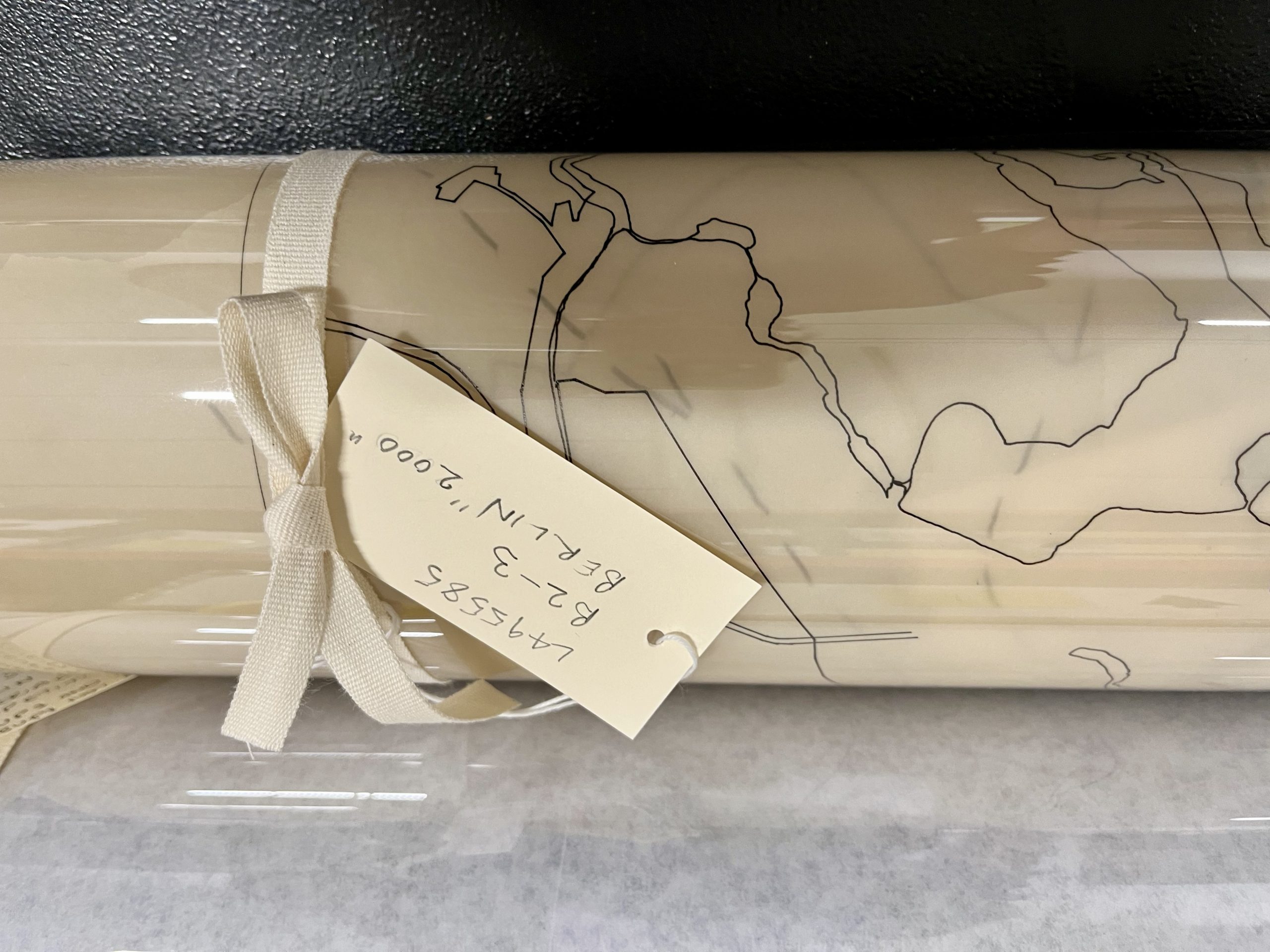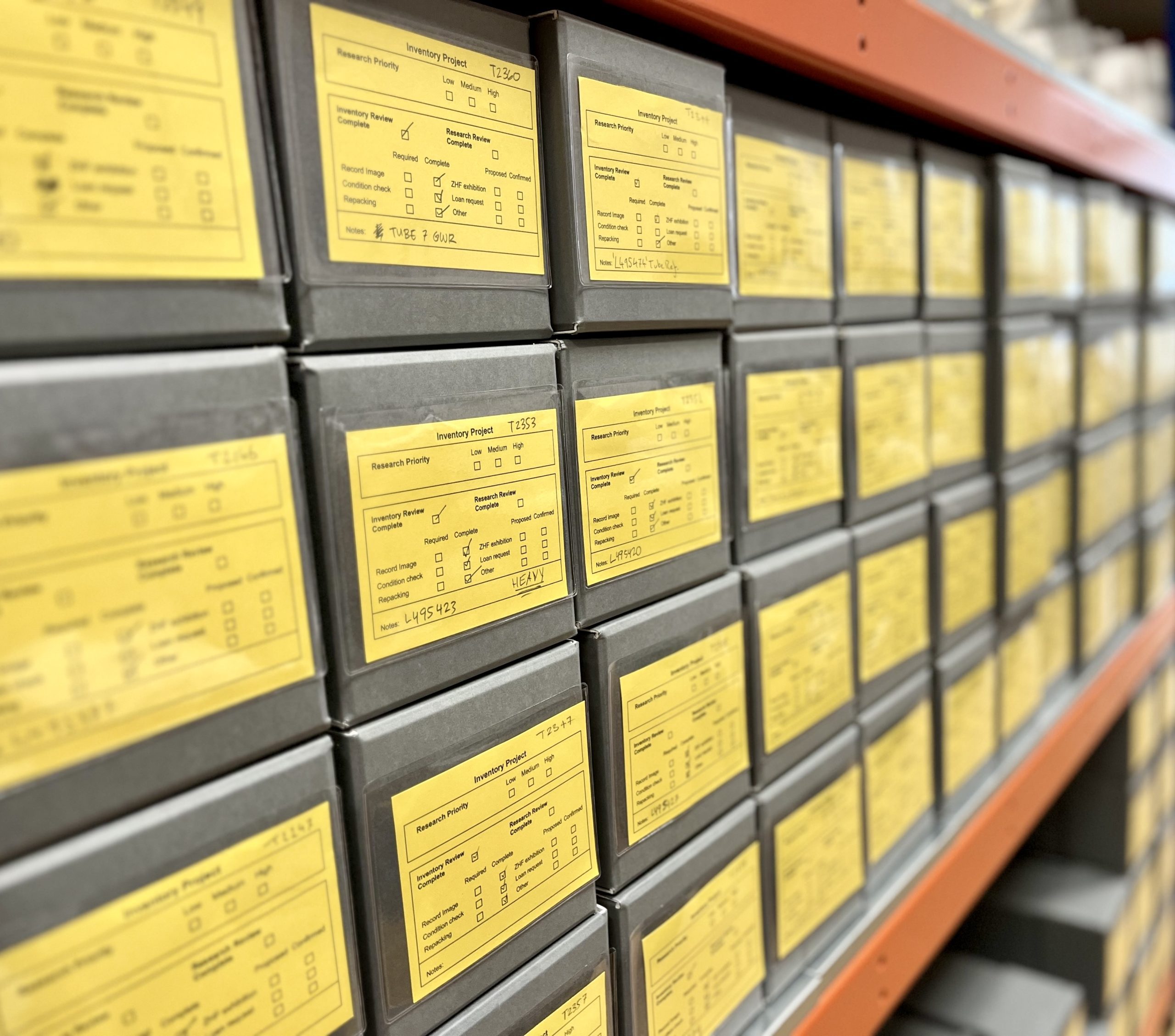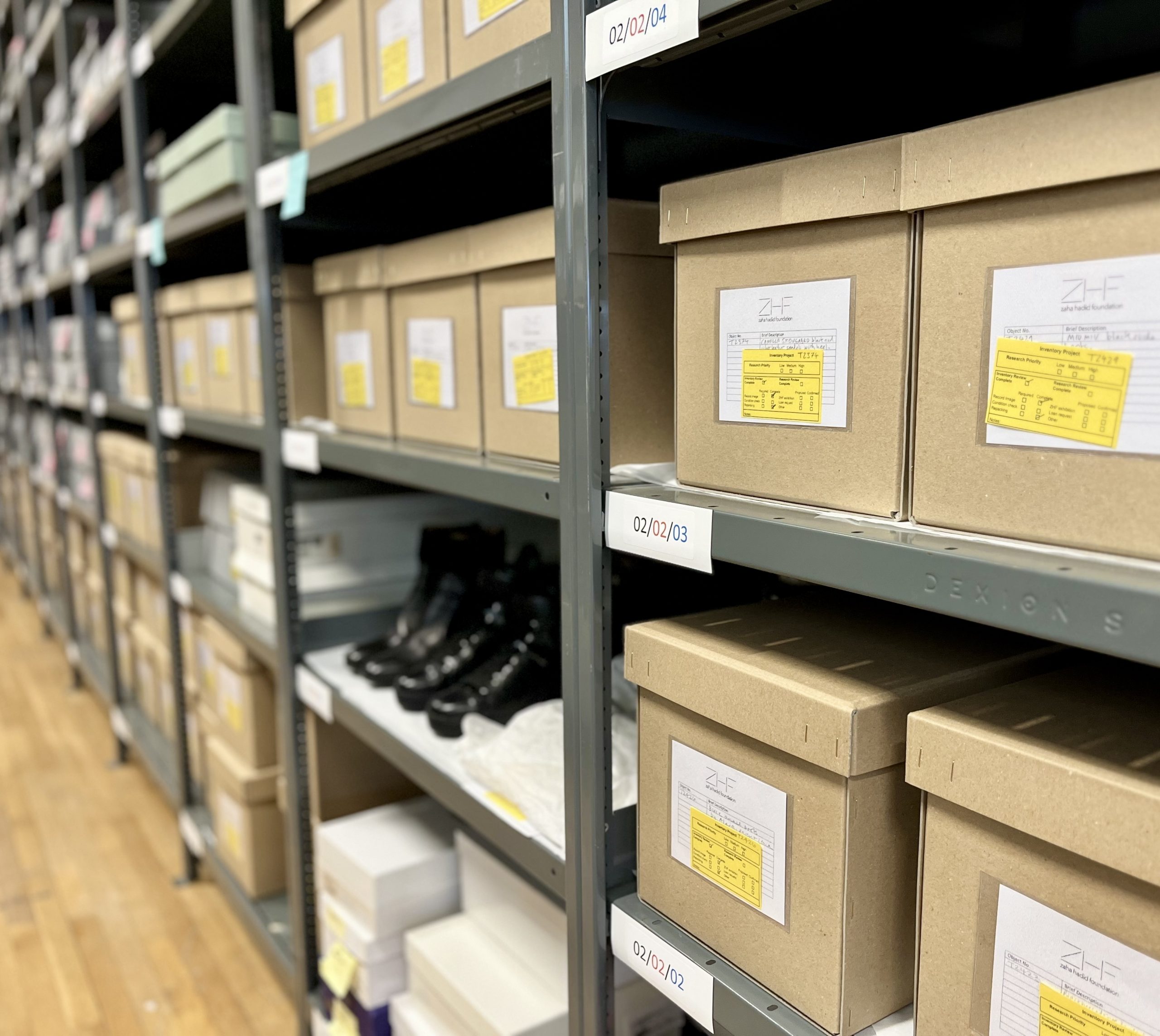Introducing the ZHF inventory project
The Zaha Hadid Foundation (ZHF) is undertaking an extensive audit and inventory of its collections, ensuring it has basic information to be accountable for the objects in its care. Originally estimated at c.15,000 objects, but likely to be far greater in number, the collection is wide ranging and includes works of art, architecture, design, fashion, photography, and ephemera. There are also books and other published material now forming the basis of a research library. This blog shares some of the work involved to facilitate the inventory project and looks back at progress made so far.
Prior to the inventory project, an initial focus was to review existing collections data and information systems, and carry out a review of the facilities, collections storage areas and workspaces at ZHF’s Shad Thames site where much of the inventory work would be carried out. This resulted in plans for the reconfiguration of the collections management system and a storage rationalisation project. The team also carried out a basic audit of key areas, such as the publications collection, and Zaha Hadid’s personal collections, including clothing, shoes and furniture. These activities helped to create much needed space for future rehousing projects, everyday collections and research work, and the practical inventory tasks ahead.
In April 2024 a pilot inventory project was set in motion, led by Helen Merrett, Registrar (Collections), with the aim to trial procedures and ensure the correct guidance, processes and equipment were available for the project going forward. Focusing on areas selected as a priority for research and review, including items relating to architecture, design, fashion, personal and archive material, spreadsheets were used to capture inventory information, highlight conservation concerns and test the import of object records into ZHF’s collections management system. Designated areas for photography were set up specifically for the purposes of recording objects for inventory, and external expertise came from Photographer Dani Tagen, who worked closely with the team to develop practical guidelines and training for photographing and processing images of a variety of objects and materials, with hints and tips to help along the way.
Due to the broad nature of the collection the inventory has presented different challenges across the various object groups, from the packing and storage of irregular shaped objects and more fragile items to object numbering and terminology standards across both physical and digital collections. A pair of Prada ankle boots stored on open shelving being straightforward to access and document, whereas garments tightly packed on clothing rails, or large storage tubes with varying label information, sometimes containing multiple rolls of architectural plans and drawings, may be more complex and timelier to process. A good starting point has been the use of pre-inventory documents to record basic object and container information, such as external labelling and identifying features, allowing us to move more swiftly through larger batches of material that could be returned to later. This approach has also worked well as a way of sharing information across teams and prioritising material in support of exhibitions, loans, research and learning, and collections care activities, and further informing the inventory work. Forming the basis of the inventory records, these pre-inventory lists are then expanded to record key information about individual objects including object name, brief description, dimensions, dates and titles (where known), and based on a brief condition assessment, the condition status. Data is then checked and formatted to support the import of records into ZHF’s collections management system.
Since the inventory started, we have created over 5000 inventory records, including items such as awards, architectural drawings and plans, footwear, architectural models, paintings, sketchbooks, portfolios and personal ephemera. Over 3000 records have been uploaded to the collections management system and over 12000 collection images recorded for identification purposes. We successfully met our target for 2024-2025! New projects for 2025 are underway, including the review and inventory of items held at off-site storage locations, items relating to the personal and business archives, and the documentation of Zaha’s personal clothing collection.
